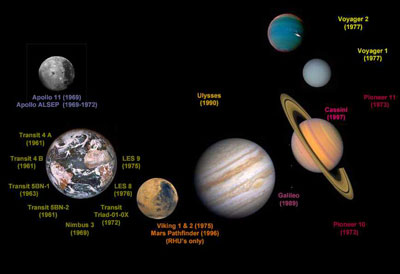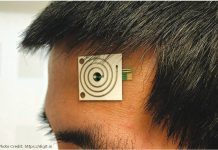
Thermoelectric materials and technology have powered spacecraft for decades. But, thanks to advances in efficiency discovered at Ames Laboratory, thermoelectric materials may have new, broader “green” energy applications.
Automobiles, military vehicles, even large-scale power generating facilities may someday operate far more efficiently thanks to a new alloy developed at the U.S. Department of Energy’s Ames Laboratory. A team of researchers at the Lab that is jointly funded by the DOE Office of Basic Energy Sciences, Division of Materials Sciences and Engineering and the Defense Advanced Research Projects Agency, achieved a 25 percent improvement in the ability of a key material to convert heat into electrical energy.
“What happened here has not happened anywhere else,” said Evgenii Levin, associate scientist at Ames Laboratory and co-principal investigator on the effort, speaking of the significant boost in efficiency documented by the research. Along with Levin, the Ames Lab-based team included: Bruce Cook, scientist and co-principal investigator; Joel Harringa, assistant scientist II; Sergey Bud’ko, scientist; and Klaus Schmidt-Rohr, faculty scientist. Also taking part in the research was Rama Venkatasubramanian, who is director of the Center for Solid State Energetics at RTI International, located in North Carolina.
So-called thermoelectric materials that convert heat into electricity have been known since the early 1800s. One well-established group of thermoelectric materials is composed of tellurium, antimony, germanium and silver, and thus is known by the acronym “TAGS.” Thermoelectricity is based on the movement of charge carriers from their heated side to their cooler side, just as electrons travel along a wire.
The process, known as the Seebeck effect, was discovered in 1821 by Thomas Johann Seebeck, a physicist who lived in what is now Estonia. A related phenomenon observed in all thermoelectric materials is known as the Peltier effect, named after French physicist Jean-Charles Peltier, who discovered it in 1834. The Peltier effect can be utilized for solid-state heating or cooling with no moving parts.
In the nearly two centuries since the discovery of the Seebeck and Peltier effects, practical applications have been limited due to the low efficiency with which the materials performed either conversion. Significant work to improve that efficiency took place during the 1950s, when thermoelectric conversion was viewed as an ideal power source for deep-space probes, explained team member Cook. “Thermoelectric conversion was successfully used to power the Voyager, Pioneer, Galileo, Cassini, and Viking spacecrafts,” he said.
Despite its use by NASA, the low efficiency of thermoelectric conversion still kept it from being harnessed for more down-to-earth applications – even as research around the world continued in earnest. “Occasionally, you would hear about a large increase in efficiency,” Levin explained. But the claims did not hold up to closer scrutiny.
All that changed in 2010, when the Ames Laboratory researchers found that adding just one percent of the rare-earth elements cerium or ytterbium to a TAGS material was sufficient to boost its performance.
The results of the group’s work appeared in the article, “Analysis of Ce- and Yb-Doped TAGS-85 Materials with Enhanced Thermoelectric Figure of Merit,” published online in November 2010 in the journal Advanced Functional Materials .
The team has yet to understand exactly why such a small compositional change in the material is able to profoundly affect its properties. However, they theorize that doping the TAGS material with either of the two rare-earth elements could affect several possible mechanisms that influence thermoelectric properties.
Team member Schmidt-Rohr studied the materials using Ames Laboratory’s solid-state nuclear magnetic resonance spectroscopy instruments. This enabled the researchers to verify that the one percent doping of cerium or ytterbium affected the structure of the thermoelectric material. In order to understand effect of magnetism of rare earths, team member Bud’ko studied magnetic properties of the materials. “Rare-earth elements modified the lattice,” said Levin, referring to the crystal structure of the thermoelectric materials.
The group plans to test the material in order to better understand why the pronounced change took place and, hopefully, to boost its performance further.
The durable and relatively easy-to-produce material has innumerable applications, including recycling waste heat from industrial refineries or using auto exhaust heat to help recharge the battery in an electric car. “It’s a very amazing area,” Levin said, particularly since many years of prior research into TAGS materials enables researchers to understand their nature. Better understanding of the thermoelectric and their improvement can immediately result in applications at larger scale than now.
Additionally, the Ames Laboratory results – dependent as they were on doping TAGS with small amounts of cerium or ytterbium – provide yet more evidence of rare-earth elements’ strategic importance. Cerium or ytterbium are members of a group of 15 lanthanides, deemed essential to just about every new technology from consumer electronics and cell phones to hybrid car batteries and generator motors in wind turbines. The Ames Laboratory has been a leader in rare-earth research going back to the closing days of World War II. Fears of shortages of rare-earth elements have caused these little-known materials to be a much-talked-about subject in the news lately.



